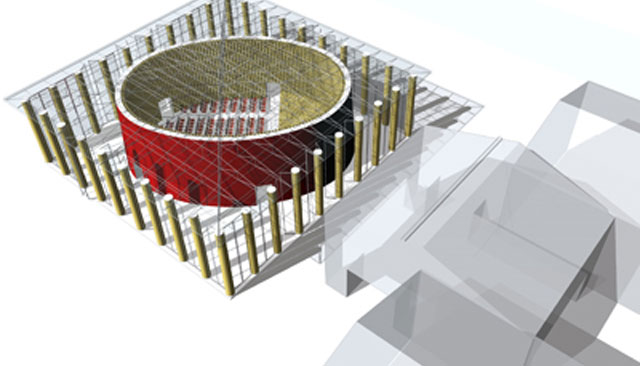Paper Tube Housing by Shigeru Ban

SHIGERU BAN
Japanese architect Shigeru Ban designs intermediate emergency shelters made of paper tubing.
He began working with cardboard tubing in cooperation with the UNHCR during the humanitarian crisis of war-torn Rwanda in 1994. Before his work, refugees were provided with aluminum poles and plastic sheeting for shelter construction. But as the aluminum poles gained good prices on local markets they preferred to sell and replace them by branches found in the woods.
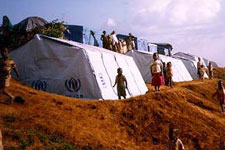
Paper Emergency Shelters for UNHCR, 1999
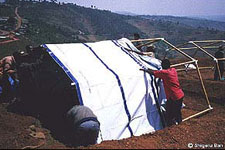
Paper Emergency Shelters for UNHCR, 1999
As deforestation already was a problem, another solution was needed. Eventually, paper tubing was distributed instead.
1995 after the earthquake in Kobe, Japan, Ban started constructing emergency housing completely out of paper tubes. The tubes are coated for water resistance. For insulation, an adhesive waterproof sponge tape is sandwiched between the tubes. Beer crates filled with sandbags are used as the foundation of the houses, while the roofs are covered with plastic sheeting. The units are easy to dismantle and the materials are appropriate for recycling. One shelter costs less than 2000$.
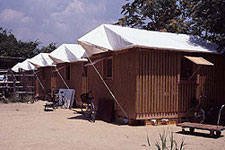
Paper Log House – Kobe 1995

Paper Log House Turkey, 2000 India
He continued this with concept during the relief assistance following the earthquakes in Turkey 1999, and in the region of Bhuj in India in 2001. For both applications, the design was adapted to local conditions. To protect against the Turkish winter, the paper tubes were filled with shredded paper. In order to suit the hot Indian climate, the roof construction was transformed by blending paper tubing and local materials like bamboo.

Paper Log House Turkey, 2000 India
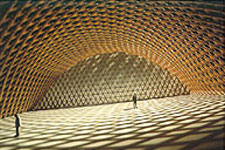
www.shigerubanarchitects.com
Ban transferred the construction method from emergency shelters to a range of permanent, large, public, aesthetically astonishing buildings, such as a church in Kobe.
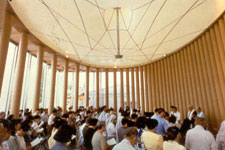
www.shigerubanarchitects.com
